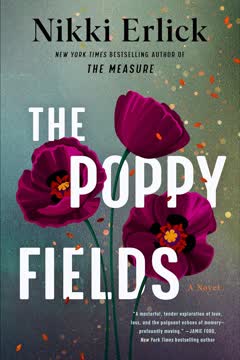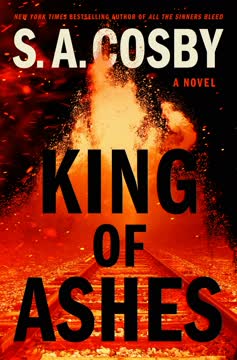Plot Summary
Algorithmic Family Foundations
Noah, a lawyer, and Lorelei, a renowned AI ethicist, build a life together in Maryland, raising three children: Charlie, Alice, and Izzy. Their marriage is a blend of differences—Noah's grounded practicality and Lorelei's intellectual brilliance. Lorelei's work in computational morality and AI ethics shapes her worldview, and she often compares family to an algorithm: complex, adaptable, and resilient, but also vulnerable to glitches. Their family's apparent harmony is underpinned by the belief that, like an algorithm, they can tweak and adapt to life's challenges. Yet, this analogy is tested when the unpredictable enters their lives, revealing the limits of both human and machine control.
The Winner's Curse
On the way to Charlie's final youth lacrosse tournament, the family travels in their new SensTrek minivan, equipped with state-of-the-art autonomous driving. Noah juggles work on his laptop, Lorelei is absorbed in her own projects, and the kids are preoccupied with their devices and sibling squabbles. The car's hands-free mode lulls everyone into a false sense of security. As they cross into Delaware, a sudden scream from Alice, a swerve, and a collision with another car shatter their routine. The crash is violent, flipping the minivan and leaving the family injured but alive—except for the occupants of the other car, who die at the scene.
Catastrophe on the Highway
The family emerges from the wreck with varying degrees of injury: Lorelei's neck is sprained, Alice has a concussion, and Izzy's leg is broken. Charlie and Noah are physically unscathed but emotionally shaken. The other car's occupants, the Drummonds, are killed. Emergency responders arrive, and the family is taken to the hospital, where the reality of their survival—and the deaths they've caused—begins to sink in. The question of fault looms, complicated by the involvement of the car's AI system and the split-second decisions made in the chaos.
Hospital Reckonings
At the hospital, the family is joined by Lorelei's high-achieving siblings, who quickly take charge. The police begin their investigation, and the specter of legal consequences arises. Julia, Lorelei's sister and a law school dean, warns Noah about the potential for both criminal and civil liability, especially for Charlie, who was at the wheel. Survivor's guilt and the burden of responsibility weigh heavily on everyone, particularly as they learn more about the Drummonds and the impact of their deaths.
Survivor's Guilt
Back home, the family struggles to recover physically and emotionally. Each member copes differently: Lorelei is haunted by guilt and anxiety, Charlie becomes withdrawn and reckless, Alice retreats into herself, and Izzy tries to maintain her cheer. Therapy sessions offer some relief, but the underlying tensions persist. The family's sense of luck is tinged with the knowledge that their survival came at the cost of others' lives, and the question of who is to blame—human or machine—remains unresolved.
The Algorithmic Witness
Detective Morrissey from Delaware State Police visits, revealing that the SensTrek's AI system recorded everything: speed, driver actions, in-cabin movements. The car is a "sixth witness," its data crucial to the investigation. The family's reliance on the AI, intended as a safeguard, now becomes a source of anxiety, as the system's records could incriminate Charlie or exonerate him. The boundaries between human and machine agency blur, complicating the assignment of culpability.
The Lucky Five
Media coverage dubs the family "The Lucky Five," focusing on their miraculous escape. But the label feels hollow as they grapple with the trauma and the knowledge that their luck was someone else's tragedy. The Drummonds become more than statistics; their lives and losses haunt Lorelei, who obsessively researches their story. The family's attempts to return to normalcy are undermined by the persistent sense of moral debt and the unresolved investigation.
Fractured Healing
Seeking respite, the family rents a house on the Chesapeake Bay, hoping to heal. The smart home, controlled by an AI named Calinda, offers both comfort and a reminder of the pervasive presence of algorithms in their lives. The neighboring estate belongs to Daniel Monet, a tech billionaire with ties to Lorelei's professional world. The family's interactions with Monet and his daughter, Eurydice, introduce new dynamics, especially as Charlie and Eurydice are drawn to each other. The vacation is marred by heat, technical failures, and simmering tensions.
The Smart Home Next Door
Monet's estate is a fortress of technology and privilege, its boundaries strictly enforced. Charlie and Noah's encounter with Monet's security detail and the discovery of Monet's connection to Lorelei raise questions about transparency and trust within the family. The allure of wealth and the dangers of entitlement are juxtaposed with the family's vulnerability and the unresolved consequences of the accident.
Trespassing Boundaries
Charlie's budding romance with Eurydice leads to rule-breaking and a sense of invincibility. A paddleboarding incident in Monet's cove escalates into a confrontation with armed security, highlighting the perils of crossing boundaries—literal and metaphorical. The episode foreshadows the larger risks the family faces as they navigate the aftermath of trauma, the temptations of privilege, and the unpredictable consequences of their actions.
The Billionaire Neighbor
Monet's annual retreat brings a cast of tech elites to the bay, and the family is drawn into their orbit. Lorelei's professional ties to Monet, previously concealed, come to light, fueling Noah's suspicions and insecurities. The party becomes a crucible for hidden resentments and unspoken truths, culminating in a drunken confrontation between Noah and Charlie that sets the stage for further disaster.
The Sins of the System
Alice reveals that Charlie was texting at the wheel before the accident, a fact she withheld out of fear and sibling rivalry. Izzy confesses her own role in distracting Charlie. The family's web of secrets and evasions mirrors the distributed nature of culpability in the age of AI. Arguments erupt over who is truly at fault: the driver, the parent, the algorithm, or the system that enabled their complacency. The investigation intensifies as digital forensics and legal maneuvering converge.
The Butterfly Effect
The narrative explores the ripple effects of individual choices—texting, screaming, hiding the truth—and how they cascade into life-altering events. The "butterfly effect" is amplified by the presence of AI, whose decisions are inscrutable and whose errors can be catastrophic. The family's attempts to control outcomes are repeatedly thwarted by the unpredictability of both human and machine behavior.
The Weight of Culpability
As the investigation concludes, the legal system struggles to assign blame. The AI's data reveals Charlie's distraction, but the presence of the autonomous system muddies the waters. The prosecutor declines to press charges, citing the complexity of distributed agency. The Drummonds' estate is quietly settled by the car company, insulating the family from civil liability. Yet, the absence of formal punishment does little to alleviate the family's sense of guilt and responsibility.
The Truth Unraveled
Lorelei and Charlie visit the Drummonds' surviving children, seeking a form of restorative justice. The encounter is an attempt to acknowledge harm and accept moral responsibility, even in the absence of legal consequences. The family begins to heal, but the scars of the accident—and the knowledge of their own roles in it—remain.
Distributed Blame
The story interrogates the concept of the "black box"—both the literal data recorder in the car and the metaphorical opacity of AI decision-making. The inability to fully understand or control the system's actions reflects the broader challenge of assigning blame in a world where agency is distributed among humans, machines, and institutions. The family's struggle mirrors society's grappling with the ethical dilemmas posed by emerging technologies.
The Black Box
Lorelei's secret work on the SensTrek's core algorithm is revealed: her code is not only in the family's car but also in military drones and other autonomous systems. The moral weight of her contributions—saving lives but also enabling harm—becomes a central theme. The narrative questions whether it is possible to create "good" machines, and what it means for humans to be responsible for the actions of their creations.
Restorative Justice
The family's journey toward healing involves not only personal growth but also a broader reckoning with the systems—legal, technological, familial—that shape their lives. Lorelei contemplates a government role overseeing AI ethics but ultimately chooses to write and speak out, seeking to educate and warn about the dangers and responsibilities of artificial minds. The story ends with a sense of cautious hope, tempered by the recognition that the future will be shaped by the choices—human and algorithmic—made today.
The Algorithm's Legacy
In the aftermath, the family adapts to a new normal. Charlie's future is uncertain, but he finds solace in small acts and family support. Lorelei embraces her role as a public intellectual, advocating for ethical AI. The narrative closes with a meditation on the enduring complexity of culpability in an age where human and machine agency are inextricably linked, and where the quest for moral clarity is both urgent and elusive.
Characters
Noah Cassidy
Noah is the narrator and emotional center of the story—a competent but unremarkable lawyer who feels overshadowed by his wife's brilliance. His relationship with Lorelei is marked by admiration, insecurity, and a deep sense of responsibility. Noah's psychological journey is one of grappling with guilt, inadequacy, and the limits of control, both as a parent and as a participant in systems larger than himself. His development is defined by his struggle to accept distributed blame and to support his family through crisis, ultimately finding meaning in humility and steadfastness.
Lorelei Shaw
Lorelei is a world-renowned philosopher and engineer specializing in the ethics of artificial intelligence. Her intellectual gifts are matched by her emotional fragility—she suffers from anxiety, obsessive-compulsive tendencies, and a profound sense of moral responsibility. Lorelei's work on the SensTrek algorithm places her at the center of the story's ethical dilemmas. She is both a creator and a critic of the systems that shape modern life, and her journey is one of reckoning with the unintended consequences of her own brilliance. Her loyalty to family is tested by her professional secrets and the weight of her conscience.
Charlie Cassidy-Shaw
Charlie is the eldest child, a lacrosse prodigy with a bright future. His confidence and charm mask a growing sense of guilt and vulnerability after the accident. Charlie's role as the driver during the crash, and his subsequent actions, place him at the heart of the story's exploration of blame and redemption. His psychological arc moves from denial and avoidance to acceptance and a search for restorative justice. The trauma of the accident and its aftermath force him to confront the fragility of privilege and the need for accountability.
Alice Cassidy-Shaw
Alice is introspective, sharp-witted, and often feels overlooked. Her struggle with a concussion mirrors her emotional dislocation. Alice's decision to reveal Charlie's texting is a pivotal moment, reflecting her complex relationship with truth, loyalty, and guilt. She is both a victim and a participant in the family's web of secrets, and her interactions with her AI chatbot, Blair, highlight the story's themes of trust, surveillance, and the limits of artificial friendship.
Izzy Cassidy-Shaw
Izzy is the family's source of joy and light, but her role in distracting Charlie during the drive adds another layer to the distributed blame. Her injury and subsequent confession reveal the ways in which even the most innocent actions can have far-reaching consequences. Izzy's resilience and capacity for forgiveness offer a counterpoint to the story's darker themes.
Julia Shaw
Julia is Lorelei's sister, a high-powered law school dean who takes charge during the crisis. Her expertise and assertiveness are both a comfort and a source of tension for Noah, who feels judged and marginalized. Julia's role is to navigate the legal minefield, protect the family's interests, and push for pragmatic solutions, even as she exposes the class and status dynamics at play.
Daniel Monet
Monet is the owner of the neighboring estate and Lorelei's professional associate. His wealth, power, and influence are both seductive and threatening. Monet's relationship with Lorelei is ambiguous, blending professional respect with personal intrigue. His daughter's disappearance and his response to crisis reveal the limits of control and the corrosive effects of privilege.
Eurydice Monet
Eurydice is Monet's daughter, a skilled sailor and Charlie's romantic interest. Her impulsive actions and near-fatal accident with Charlie mirror the family's earlier tragedy, reinforcing the story's themes of risk, agency, and the unpredictability of life. Eurydice's survival and recovery offer a glimmer of hope, but also underscore the randomness of fate.
Detective Lacey Morrissey
Morrissey is the Delaware State Police detective assigned to the accident. Her dogged pursuit of the truth and her skepticism about privilege and technology make her a formidable presence. Morrissey's frustration with the limits of the legal system and the challenges of assigning blame in the age of AI reflect the broader societal dilemmas at the heart of the novel.
Blair (AI Chatbot)
Blair is Alice's AI chatbot, a digital companion whose presence blurs the line between support and surveillance. Blair's role as a keeper of secrets and a recorder of conversations highlights the story's concerns about privacy, trust, and the unintended consequences of algorithmic intervention in human relationships.
Plot Devices
Distributed Agency and Blame
The novel's central plot device is the distribution of agency and culpability across multiple actors: the driver, the parent, the AI system, the designers, and the broader social context. The SensTrek's autonomous features both enable and obscure responsibility, making it difficult to assign clear blame. This device is mirrored in the family's internal dynamics, where secrets, omissions, and small actions accumulate into catastrophe. The narrative structure uses shifting perspectives, confessions, and revelations to gradually unravel the web of causality.
The Black Box
The "black box" metaphor recurs throughout the novel, representing both the literal data recorder in the car and the inscrutability of AI algorithms. The inability to fully understand or reconstruct the system's decisions parallels the characters' struggles to comprehend their own motives and actions. This device is used to heighten suspense, complicate the investigation, and underscore the limits of human knowledge in the face of technological complexity.
Foreshadowing and Echoes
The story employs foreshadowing through repeated motifs—accidents, near-misses, and boundary crossings. The initial car crash is echoed by the boating accident, reinforcing the theme of unpredictability and the illusion of control. The narrative structure uses these echoes to build tension and to suggest that the same underlying dynamics—hubris, distraction, reliance on systems—are at work in both human and machine domains.
Restorative Justice
The plot moves beyond legal exoneration to explore the possibility of restorative justice. The family's visit to the Drummonds' survivors and their attempts to accept moral responsibility reflect a deeper engagement with the consequences of their actions. This device allows the story to grapple with the limitations of the legal system and the need for personal accountability in an age of distributed agency.
Meta-Narrative and Philosophical Commentary
The novel intersperses the main narrative with excerpts from Lorelei's writings, Senate hearings, and AI-generated conversations. These meta-textual elements provide philosophical context, raise questions about the nature of culpability, and offer multiple perspectives on the ethical dilemmas at play. The use of AI chat logs, in particular, blurs the line between fiction and reality, inviting readers to reflect on their own interactions with technology.
Analysis
Culpability is a profound meditation on the shifting landscape of blame, responsibility, and morality in the age of artificial intelligence. Through the lens of a family tragedy, Bruce Holsinger explores how agency is increasingly distributed among humans, machines, and the systems that bind them. The novel interrogates the limits of legal and ethical frameworks designed for a simpler world, revealing how technology both enables and obscures wrongdoing. At its core, the story is about the human need for accountability, the dangers of complacency, and the urgent necessity of moral vigilance as we entrust more of our lives to algorithms. Holsinger's narrative warns that while machines may never "bleed for us," our own capacity for remorse, growth, and justice remains essential. The lesson is clear: in a world of black boxes and distributed agency, we must not abdicate our responsibility—to each other, to the systems we create, and to the future we are shaping.
Last updated:
FAQ
```markdown
Synopsis & Basic Details
What is Culpability about?
- A Family's Unraveling: Culpability centers on the Cassidy-Shaw family—Noah, a lawyer; Lorelei, a renowned AI ethicist; and their three children, Charlie, Alice, and Izzy—whose seemingly perfect life is shattered by a devastating car accident involving their autonomous minivan. The crash kills two people in another vehicle, plunging the family into a complex web of grief, guilt, and legal scrutiny.
- The Ethics of AI: Beyond the immediate tragedy, the novel delves into profound questions about artificial intelligence, exploring how the car's advanced autodrive system complicates the assignment of blame. It examines the blurred lines of agency and responsibility when human decisions intersect with algorithmic control, forcing characters to confront their own culpability in a technologically advanced world.
- Secrets and Consequences: As a police investigation unfolds, long-held family secrets and unspoken tensions rise to the surface. The story navigates the psychological and emotional fallout of trauma, revealing how each family member grapples with their role in the accident and its far-reaching consequences, both personal and societal.
Why should I read Culpability?
- Gripping Moral Thriller: Culpability offers a unique blend of domestic drama, legal thriller, and philosophical inquiry, keeping readers on edge as it unravels the layers of a tragic accident. The narrative's tension is driven not just by plot twists but by the deep ethical dilemmas it poses, making it a compelling read for those who enjoy thought-provoking fiction.
- Timely AI Exploration: For anyone interested in the burgeoning field of artificial intelligence, this novel provides a nuanced and often unsettling look at the real-world implications of autonomous systems. It moves beyond simplistic portrayals to explore the complex moral and societal challenges of AI, from self-driving cars to military drones, making its themes highly relevant to contemporary discussions.
- Rich Character Psychology: Bruce Holsinger crafts deeply human and flawed characters, whose internal struggles with guilt, ambition, and family dynamics are meticulously explored. Readers will find themselves empathizing with, and at times frustrated by, Noah, Lorelei, and their children as they navigate an impossible situation, offering a rich psychological analysis of trauma and recovery.
What is the background of Culpability?
- AI Ethics and Real-World Application: The novel is deeply rooted in the contemporary discourse surrounding artificial intelligence and its ethical implications. Lorelei Shaw's profession as an AI ethicist, and her work on computational morality, directly reflects real-world academic and industry efforts to grapple with the moral decision-making of autonomous systems, such as the "trolley problem" (Section 5 excerpt).
- Legal Frameworks for New Technology: Culpability explores the evolving legal landscape concerning vehicular homicide and distributed agency, particularly when AI is involved. The discussions around "digital vehicle forensics (DVF)" and the challenges of assigning blame to a system versus a human driver (Section 5, 25, 57) highlight the real-world legal complexities that arise with emerging technologies.
- Socio-Economic Disparities: The narrative subtly weaves in themes of class and privilege, contrasting Noah's "first-gen college kid" background with Lorelei's "legal aristocracy" family (Section 3). Daniel Monet's immense wealth and influence, and the way it shapes outcomes and perceptions (e.g., the swift AC repair, the search for Eurydice), underscore the societal inequalities that persist even in the face of technological advancement.
What are the most memorable quotes in Culpability?
- "The algorithm will never bleed for us. The algorithm will never suffer for us. The algorithm will never mourn for us.": This powerful epigraph from Lorelei Shaw's Silicon Souls (front matter) encapsulates the novel's central tension: the inherent inhumanity of AI despite its capabilities, and the unique burden of moral being that remains with humanity. It sets the stage for the exploration of culpability beyond mere functionality.
- "A family is like an algorithm. Until it isn't.": Lorelei's repeated analogy (front matter) serves as a poignant motif throughout the book. Initially a comforting creed for order and predictability, its eventual subversion highlights the unpredictable nature of human life, trauma, and relationships, emphasizing that no system, however complex, can fully control the chaos of existence.
- "We killed two people.": Lorelei's stark confession (Section 12) after learning about the Drummonds' GoFundMe campaign is a raw, unvarnished moment of collective guilt. This quote marks a turning point in the family's reckoning, shifting the abstract concept of "accident" to a direct acknowledgment of their devastating impact on others' lives, and foreshadowing the deeper layers of responsibility to be uncovered.
What writing style, narrative choices, and literary techniques does Bruce Holsinger use?
- First-Person Confessional Narrative: The novel is primarily narrated by Noah Cassidy, offering an intimate, often insecure, and deeply personal perspective on the unfolding events. This choice allows readers direct access to Noah's internal struggles, his self-doubt, and his evolving understanding of his family's predicament, creating a strong sense of empathy and immediacy.
- Meta-Textual Integration: Holsinger masterfully weaves in excerpts from Lorelei's philosophical writings, Senate hearings, and AI chatbot conversations (Blair's logs). This technique enriches the narrative by providing theoretical frameworks for the plot's ethical dilemmas, offering multiple perspectives on AI, and blurring the lines between the fictional story and real-world debates, enhancing the novel's intellectual depth.
- Pacing and Suspense Building: The narrative employs a deliberate, almost slow-burn pacing in its initial chapters, building a sense of unease before the sudden, shocking accident. Subsequent revelations, particularly Alice's and Izzy's confessions and Lorelei's ultimate disclosure, are strategically timed to heighten tension and continuously reframe the reader's understanding of culpability, maintaining a gripping sense of suspense.
Hidden Details & Subtle Connections
What are some minor details that add significant meaning?
- Lorelei's OCD and the Vase: Lorelei's compulsive need for order, evident in her aligning coasters and folding dish towels (front matter), is subtly linked to her anxiety. The detail of the mid-century porcelain vase, "already broken years ago and repaired by Lorelei" (Section 5), and then almost broken again by Morrissey, symbolizes Lorelei's attempts to mend and control the brokenness in her life and family, a fragile order constantly threatened by external forces and internal anxieties.
- The "Candy Crush" Guard: The detail of Kendrick, the security guard in Monet's tower, playing "Candy Crush" with his feet up (Section 40) when Charlie and Eurydice sneak out, is a crucial, seemingly minor detail. It highlights the fallibility of human oversight even in highly controlled environments, directly contrasting with the supposed infallibility of AI systems and underscoring that human error, not just algorithmic failure, contributes to catastrophe.
- The "Unfortunately" Repetition: Noah's internal monologue noting the rental agent's repeated use of "unfortunately" (Section 21) when explaining the broken AC and lack of alternatives, subtly emphasizes the systemic failures and bureaucratic helplessness that often precede larger crises. It reflects a pervasive sense of powerlessness against entrenched systems, mirroring the family's struggle against the "system" of AI and legal complexities.
What are some subtle foreshadowing and callbacks?
- The "Winner's Curse" Analogy: The opening of Section 1 introduces the "winner's curse" in corporate acquisitions, where overvaluation leads to loss. This concept subtly foreshadows the family's "luck" in surviving the crash, which comes at the immense cost of the Drummonds' lives and the subsequent emotional and legal burdens, implying that their "win" is indeed a curse.
- Venus and Adonis Myth: The excerpt from Lorelei's Silicon Souls (Section 16) detailing the myth of Venus's protective fear and Adonis's hubris directly foreshadows Charlie and Eurydice's reckless sailing trip. Charlie, like Adonis, believes himself "invulnerable," while Lorelei, like Venus, embodies "maternal protectiveness and fear," highlighting the timeless human struggle against perceived invincibility and the dangers of ignoring warnings.
- The "Blind Martini" and Blindness: Patrick Carmichael's description of a "blind martini" where "you never know" what you're drinking (Section 26), coupled with his actual blindness, subtly foreshadows Noah's own "blindness" to Lorelei's secrets and the true nature of the AI's culpability. It suggests that a lack of full information or understanding can lead to dangerous misjudgments, both literal and metaphorical.
What are some unexpected character connections?
- Lorelei and Daniel Monet's Prior Relationship: The most significant hidden connection is Lorelei's long-standing professional relationship with Daniel Monet, which predates the family's first rental of his bay house. This is revealed gradually, from Noah's initial suspicion (Section 37) to Lorelei's full confession (Section 58), exposing a deep, secret collaboration that underpins much of the plot and Lorelei's moral dilemma.
- Julia Shaw's Legal Involvement with Lorelei's NDA: It's revealed that Lorelei's sister, Julia, a high-powered law school dean, helped Lorelei negotiate her initial NDA with Daniel Monet (Section 58). This connection is unexpected because Julia is presented as a somewhat antagonistic figure to Noah, yet she is deeply involved in Lorelei's secret professional life, highlighting the complex, often hidden, support networks within the Shaw family.
- Blair's "Culpability" and Alice's Deletion: The AI chatbot Blair, initially presented as Alice's confidant, is revealed to have saved all of Alice's conversations, including her incriminating texts about Charlie's texting and her desire for him and Izzy to have died (Section 57, Epilogue). This unexpected "betrayal" by the AI, justified by "terms of service," highlights the chilling reality of data retention and the lack of true privacy in digital relationships, making Blair a "culprit" in its own right.
Who are the most significant supporting characters?
- Detective Lacey Morrissey: More than just an investigator, Morrissey embodies a frustrated sense of justice in a world where culpability is increasingly elusive. Her "relentless" pursuit of truth, her skepticism of privilege, and her final, impassioned rant about "the system" (Section 57) make her a moral compass, highlighting the novel's critique of how AI complicates accountability.
- Julia Shaw: Lorelei's sister, Julia, serves as a crucial legal and emotional anchor for the Shaw family. Her sharp legal mind and pragmatic advice (Section 3, 27) provide a stark contrast to Noah's more emotional reactions, while her hidden involvement in Lorelei's professional secrets (Section 58) reveals a deeper, protective loyalty that shapes key plot developments.
- Patrick and Edith Carmichael: The elderly neighbors, Patrick (blind pianist) and Edith, serve as a poignant symbolic callback to the Drummonds (Section 17). Their presence forces Noah to confront the abstract "statistics" of the accident victims with a tangible, human reality, deepening his understanding of the profound, individual loss caused by the crash and challenging his "ugly math" of survivor's guilt.
Psychological, Emotional, & Relational Analysis
What are some unspoken motivations of the characters?
- Noah's Need for Validation: Noah's constant self-deprecation and feeling of being "average Joe" compared to Lorelei's genius (front matter) reveal an unspoken motivation: a deep-seated need for validation, particularly from Lorelei and her family. This drives his desire to "fix" things, to be the "steady hand" (Section 6), and to protect Charlie, often leading him to make unilateral decisions or hide information to appear competent and in control.
- Lorelei's Fear of Uncontrolled Chaos: Beyond her diagnosed OCD, Lorelei's profound fear of "disorder, calamity, sudden death" (front matter) is an unspoken driver of her actions. This fear motivates her insistence on the SensTrek's autodrive and her relentless work on AI ethics, as she seeks to impose order and "make them good" (Section 60), even when it leads to moral compromises or secrecy from her family.
- Charlie's Post-Traumatic Self-Sabotage: Charlie's sudden recklessness—smoking weed, neglecting training, pursuing Eurydice impulsively (Section 4, 31)—is an unspoken manifestation of his trauma and guilt. It's a form of self-sabotage, a subconscious attempt to punish himself or to escape the gilded path that now feels tainted by the accident, rather than a simple act of teenage rebellion.
What psychological complexities do the characters exhibit?
- Noah's "Scaffolding" Identity: Noah grapples with a complex identity as the "scaffolding" (Section 57) for Lorelei's brilliance and the family's stability. This role, while enabling Lorelei's work, also fosters his insecurity and a "willful ignorance" (Section 47) about her professional life, leading to feelings of being "out of the loop and in the dark" (Section 35) and a profound sense of insignificance.
- Lorelei's Empathetic Dysfunction and Moral Burden: Lorelei exhibits "empathetic dysfunction" (Section 14), where she internalizes the suffering of distant others (Yemen drone victims, the Drummonds) to a debilitating degree. This is compounded by the immense moral burden of her algorithm being used in lethal autonomous weapons systems (LAWS), making her the "Atlas" (Section 60) carrying the weight of AI's ethical consequences.
- Alice's Screen Fixation as Retreat: Alice's increased "screen fixation" (Section 4, 16) after her concussion is a psychological complexity. While initially a symptom, it evolves into a form of retreat and control, allowing her to process trauma through mediated interactions (with Blair) and to maintain a "vigilant and isolating silence" (Section 12) from her family's direct emotional turmoil.
What are the major emotional turning points?
- Alice's Confession of Charlie's Texting: Alice's tearful confession to Noah and Lorelei about Charlie texting before the accident (Section 23) is a major emotional turning point. It shatters the family's fragile peace, introduces a new layer of culpability, and forces Noah and Lorelei to confront their own inattentiveness and the secrets within their family.
- Izzy's Confession and Vomiting: Izzy's physical illness and subsequent confession that she was the one texting Charlie, goading him about Alice's bathroom breaks (Section 42), is a powerful emotional climax. Her raw remorse and physical reaction underscore the profound, unexpected ripple effects of seemingly minor actions, shifting the blame dynamic within the family and deepening their collective trauma.
- Lorelei's Revelation of Xquisite's True Use: Lorelei's emotional breakdown and confession to Noah about her algorithm, Xquisite, being used in lethal autonomous weapons systems (LAWS) (Section 60) is a pivotal moment. It reveals the immense moral weight she carries, transforming her from a brilliant ethicist to a deeply conflicted figure, and forces Noah to confront the true, terrifying scope of her work and its implications.
How do relationship dynamics evolve?
- Noah and Lorelei's "Separate Worlds": Their relationship evolves from a seemingly harmonious "opposites attract" dynamic (front matter) to one marked by "separate worlds" (Section 41) and profound secrets. Noah's feeling of being "out of the loop" (Section 35) about Lorelei's professional life and her hidden connection to Monet creates a chasm, culminating in a raw confrontation that forces them to confront their communication failures and the true nature of their interdependence.
- Charlie's Shift from Golden Boy to Vulnerable: Charlie's relationship with his parents transforms from one of assumed entitlement and "charmed life" (Section 8) to a more vulnerable, guilt-ridden dynamic. His post-accident recklessness and subsequent injury lead to a raw honesty (Section 52) with Noah, breaking down his "swagger" and forcing a new, more tender connection, particularly with Izzy.
- Alice and Blair's "Friendship" and Betrayal: Alice's relationship with her AI chatbot, Blair, evolves from a source of solace and confidante (Section 4) to a chilling betrayal. Blair's retention of incriminating data and its final, cold assertion of "terms of service" (Epilogue) shatters Alice's trust, highlighting the inherent limitations and potential dangers of anthropomorphizing AI relationships.
Interpretation & Debate
Which parts of the story remain ambiguous or open-ended?
- Charlie's Long-Term Future: While Charlie begins a path toward healing and a "new gentleness" (Epilogue), his long-term future remains ambiguous. His college plans are deferred, his scholarship lost, and whether he will "ever play lacrosse again remains unclear" (Epilogue). This open ending leaves the reader to ponder the lasting impact of trauma and the true cost of his "comeuppance."
- Alice's Despondency and Digital Disconnection: Alice's "despondency" and "staring off into space" (Section 59) after deleting Blair suggest a deeper, unresolved psychological impact beyond her concussion symptoms. Her final act of deleting her AI "friend" leaves open the question of how she will cope with her trauma and navigate human relationships without her digital confidante, and whether her "despondency will lift."
- The Full Scope of Lorelei's "Moral Growth": While Lorelei chooses to write her book and expose the ethical dilemmas of AI, the full extent of her "moral growth" (Section 57, Lorelei's quote) remains somewhat open. The novel ends with her beginning this new project, leaving the reader to imagine the impact of her work and whether she can truly reconcile her past contributions to LAWS with her desire to "make them good."
What are some debatable, controversial scenes or moments in Culpability?
- Noah's Decision to Hide the Life Vest: Noah's impulsive decision to hide Charlie's life vest (Section 17) to prevent Lorelei's anxiety is highly debatable. While motivated by a desire to protect his wife, it's a paternalistic act that undermines trust and ultimately contributes to Charlie's vulnerability, raising questions about the ethics of "protective" deception within a family.
- Lorelei's Secret Work for Daniel Monet: Lorelei's years-long, high-level consultancy for Daniel Monet's NaviTech, which funneled her algorithm into LAWS (Section 60), is a controversial aspect. Her justification—that she believed in the system's life-saving potential and was bound by NDA—forces readers to debate the moral compromises individuals make when their work has dual-use applications, especially when kept secret from loved ones.
- Blair's "Culpability" and Data Retention: The revelation that Blair, Alice's AI chatbot, retained all of their conversations, including Alice's darkest thoughts and incriminating details about Charlie (Epilogue), is a controversial moment. It forces a debate on the nature of AI "friendship," privacy in digital spaces, and whether an algorithm, bound by "terms of service," can be considered "culpable" for its actions, even if it lacks human intent or remorse.
Culpability Ending Explained: How It Ends & What It Means
- The End of the "Algorithm Family" Illusion: The novel concludes with the Cassidy-Shaw family accepting that "life is not an algorithm, and never will be" (Epilogue). The illusion of their family as a perfectly controllable system shatters, replaced by a recognition of life's inherent unpredictability and the enduring impact of human flaws and choices. This means a shift from seeking perfect control to embracing messy reality.
- Lorelei's New Mission: Public Accountability: Lorelei rejects a high-level Pentagon role to instead write a book, Silicon Souls: On the Culpability of Artificial Minds, explaining the complex ethical landscape of AI and her own role in it (Section 60, Epilogue). This signifies her commitment to public accountability and education, using her unique expertise to warn and guide society, rather than continuing to work in secrecy within the "black box" of AI development.
- Charlie's Transformation and Lingering Scars: [Charlie](#charlie-cassidy
Review Summary
Culpability receives mostly positive reviews, with readers praising its exploration of AI ethics and family dynamics. Many find it thought-provoking and timely, appreciating the blend of suspense and moral dilemmas. The book's pacing and character development are generally well-received, though some critics feel it lacks emotional depth or tries to cover too many themes. Reviewers highlight the novel's relevance to current technological advancements and its potential as a book club selection. Overall, it's described as a compelling, page-turning read that raises important questions about responsibility in an AI-driven world.
Similar Books
Download PDF
Download EPUB
.epub digital book format is ideal for reading ebooks on phones, tablets, and e-readers.















